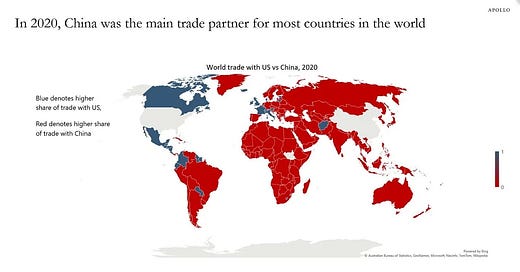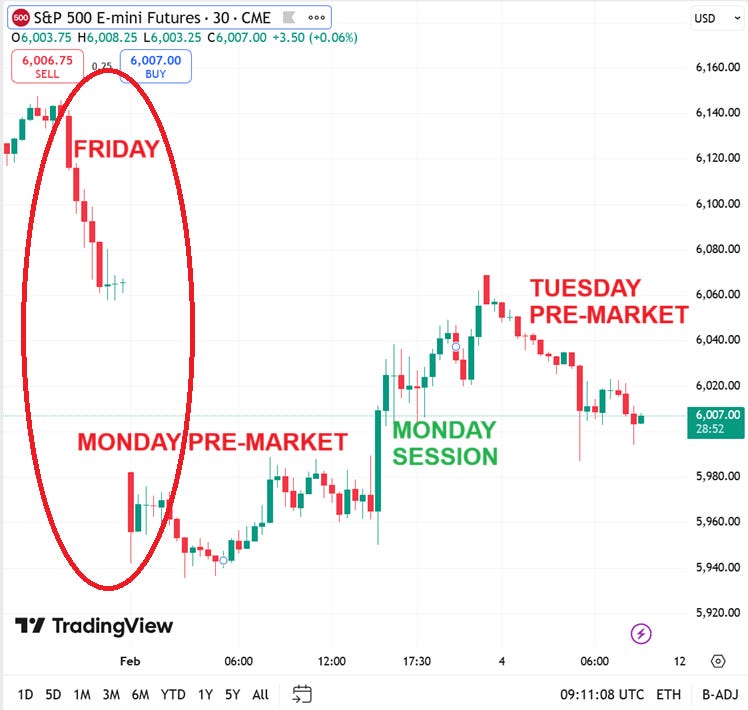⁉️Will tariffs limit economic growth, lift inflation and volatility in the markets⁉️
Brief explainer of the trade war 2.0 and its potential impact on the markets and the global economy
On Friday, January 31, President Donald Trump said he would impose tariffs on imports from China, Canada, and Mexico the next day and vowed to also slap tariffs on the European Union with no clarification of the particular date.
Subsequently, on Saturday, February 1, President Donald Trump ordered tariffs on China, Canada, and Mexico, that were about to take effect on Tuesday, February 4.
Since then there have been several developments coming from all interested countries which pledged retaliation. This piece aims to sort out all the events, explain them, assess the market and economic impact as well as elaborate on what might be lying ahead.
As the following chart of the S&P 500 futures shows, the market has already seen some pretty sharp moves following the developments, meaning the aforementioned matter is important to investors.
Before moving to the full piece, one important clarification. A tariff is a tax that is put on products made overseas and paid by companies importing these products to their home country’s government.
In terms of who ultimately pays this additional cost, it depends on plenty of factors such as the ability to pass it on to consumers, exchange rate changes, companies’ ability to absorb a higher tax, retaliations tariffs, and others.
TRADE WAR TIMELINE OF 2025




